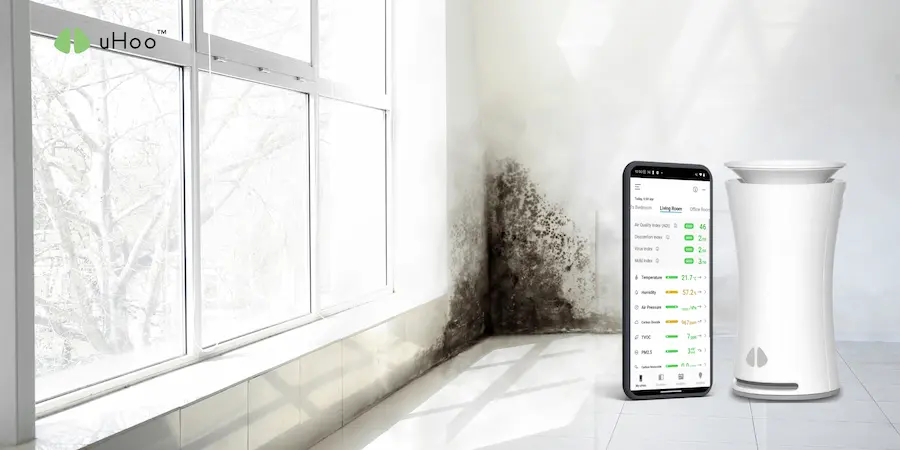In tropical climates, where humidity is a constant companion, preventing mold growth can feel like an uphill battle. However, understanding the science behind mold and implementing targeted strategies can show you exactly how to stop mold from taking root and spreading in your high-humidity home. It’s about controlling the conditions mold needs to thrive.
Here’s the science-backed way on how to stop mold growth:
-
Eliminate Moisture: The Absolute Foundation (Scientific Principle: Water Activity):
Mold spores are ubiquitous, but they need moisture to germinate and grow. This isn’t just about liquid water. It’s about the “water activity” on a surface, related to relative humidity. Mold thrives when surfaces have a water activity of 0.75 or higher (which correlates to relative humidity above 60-65%).
- Strategy: To learn how to stop mold, maintain indoor Relative Humidity (RH) between 40-60%. Use dehumidifiers in perpetually damp areas, ensuring they are properly sized for the space. Fix all leaks (plumbing, roof, windows) immediately – within 24-48 hours. Ensure any wet materials are dried thoroughly and quickly.
- uHoo’s Role: Your uHoo monitor provides precise RH readings, giving you the critical data to ensure you’re maintaining the optimal humidity range and proactively identifying high-risk areas.
-
Optimize Ventilation: Remove Humid Air and Replenish with Drier Air (Scientific Principle: Air Exchange Rates):
Stagnant, humid air allows moisture to build up on surfaces. Adequate air exchange removes this moisture-laden air and introduces drier air.
- Strategy: Use mechanical ventilation (exhaust fans) in kitchens and bathrooms religiously. These directly vent moisture-laden air outside. Practice strategic natural ventilation (“air purges”) by opening windows for short bursts when outdoor humidity is lower. Ensure good overall air circulation within rooms using fans.
- uHoo’s Role: By monitoring CO2 and VOCs, uHoo can indirectly indicate inadequate ventilation (as these levels rise in stagnant air). When you ventilate and see these levels drop, you’re confirming effective air exchange.
-
Control Temperature: Avoid Condensation (Scientific Principle: Dew Point):
When warm, humid air meets a cold surface, it reaches its “dew point,” and condensation forms. This liquid water is an immediate food source for mold.
- Strategy: Ensure proper insulation, especially on pipes or in attics. Maintain a relatively consistent indoor temperature. Your AC plays a dual role: cooling and dehumidifying. A well-functioning AC helps prevent surfaces from getting cold enough for condensation to form.
- uHoo’s Role: uHoo monitors both temperature and humidity. A combination of low surface temperature (e.g., cold wall near an AC vent) and high RH on uHoo could indicate a condensation risk.
-
Remove Organic Food Sources: Cleanliness is Key (Scientific Principle: Nutrient Limitation):
Mold needs organic material to eat. Dust, dirt, cellulose (in drywall), wood, fabrics – these are all potential food sources.
- Strategy: Regularly clean and dust surfaces, especially in damp areas. Use vacuums with HEPA filters to capture mold spores and their food source. Promptly clean up any spills. For very moldy porous materials (e.g., water-damaged drywall), removal and replacement are often necessary, as mold roots deeply.
- uHoo’s Role: High PM2.5 readings on uHoo (particulate matter, including dust and mold spores) can signal that more frequent cleaning is needed.
-
Maintain Your HVAC System: Prevent Internal Contamination:
Your AC unit, if neglected, can become a significant source of mold, as its coils and drip pans are inherently cool and wet.
- Strategy: Clean or replace AC filters monthly. Ensure the AC drip pan drains freely and is not holding standing water. Consider professional cleaning of AC coils and ducts annually or biennially.
- uHoo’s Role: If your uHoo shows high PM2.5, VOCs (some mold produce these), or persistently high humidity despite other efforts, it’s a strong indicator that your AC system itself might be contaminated and needs attention.
By understanding these scientific principles and applying these targeted strategies, you gain clear knowledge on how to stop mold growth and maintain a consistently healthy and dry environment in your high-humidity home.



